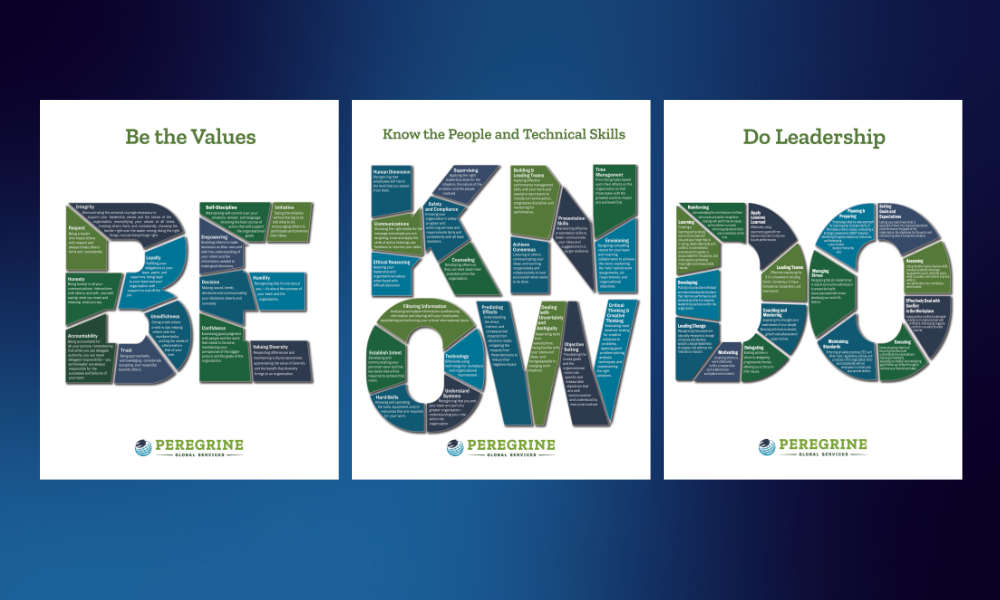Leadership demands are evolving, and while today’s generation can take inspiration and lessons from history’s great leaders, they cannot always cling to traditional management practices that have served in the past.
Take, for example, the past four years. Resilience and adaptation became the difference-makers as organizations confronted a global pandemic, geopolitical conflicts, supply chain disruptions, cyber threats, and labor shortages. In a McKinsey and Company interview with Sarah Friar, current CEO at Nextdoor and former CFO at Square, she attests to fostering resilience through critical thinking, situational analysis, and diversity of thought. Higher education can help instill these skills in graduates whether they become entrepreneurs, run businesses, lead NGOs, serve public agencies, or fill roles unimagined.

However, transitioning from academic success to real-world leadership poses a unique challenge. Much of a student’s success in college boils down to individual performance and academic excellence. Yet after graduation, success often hinges on something else: leadership skills or a person’s ability to inspire others, communicate vision, and navigate interpersonal relationships. So, the pressing question for educators and students alike is: How can higher education evolve to equip students with these essential leadership skills?
Be-Know-Do
Peregrine has always focused on the Be-Know-Do model of leadership. This model focuses on defining personal values, learning the technical and interpersonal skills necessary to guide others, and doing the work to help a collective effort succeed.
- BE: This phase emphasizes the cultivation of values-based leadership. It’s about guiding students to understand and embody the core values that inform decision-making and problem-solving, individually and within teams. This process encourages students to develop a unique leadership identity, or “brand,” reflecting their values and principles.
- KNOW: Here, the focus shifts to acquiring knowledge and skills vital for leadership, including effective communication, team dynamics, supervision, and managing change and performance. Students are supported in building a personalized leadership toolkit that is aligned with their leadership identity and enhances their capability to lead in diverse situations.
- DO: The final phase involves putting knowledge into action and embodying the values and skills learned. This includes communicating effectively, planning strategically, coaching, mentoring, managing conflicts, and leading by example. Students learn to select and apply the appropriate leadership tools to each situation, staying true to their unique leadership identity.

In practice, the Be-Know-Do framework begins with introducing its core concepts, providing students with a baseline understanding of leadership. After the introduction, experiential learning activities allow students to practice the necessary skills in a low-stakes environment. In particular, group activities and assignments let students try different leadership skills and determine what works best in each situation, maximizing transferability in real-world settings. For instance, multi-deliverable group projects focused on enhancing communication skills demonstrate the application of these concepts. Regular assessments and feedback help identify and bridge learning gaps, fostering an ongoing development process.
Keeping these steps in mind, Peregrine offers leadership resources that can be incorporated into an academic program to improve students’ efficacy in influencing others to reach a collective goal.

Beginning with Situational Leadership
Situational leadership was defined in 1969 by Dr. Paul Hersey and Dr. Ken Blanchard. Still, the concept remains as relevant as ever: adapting one’s leadership style to a unique situation, task, and group of performers. A proficient situational leader excels in self-awareness and empathy, accurately gauges the competence and motivation of their team members, and modifies their approach based on the specific needs of each circumstance.
Understanding Different Leadership Styles
Before adapting one’s leadership style, the student needs to understand that different leadership styles, communication methods, and decision-making frameworks exist.
Building a foundation of leadership knowledge provides the students with choices as they face new circumstances. Instructors can add leadership materials or modules as homework assignments, discussion board topics, or background to more extensive case studies. Peregrine offers a variety of interactive leadership modules that use text, video, audio, activities, and assessment to promote student understanding of fundamental leadership skills. These examples range from 4-hour assignments to comprehensive, 30-hour courses:
A practical approach to mastering situational leadership involves the analysis of real-world leadership challenges. This method illustrates the application of various leadership styles and deepens students’ critical thinking and adaptability. Consider the following structured assignment:
- Select case studies illustrating different leadership challenges across industries, cultures, and scenarios. For example, use Satya Nadella’s transformation of Microsoft, Elon Musk’s purchase of X, or Angela Merkel’s leadership during the European Debt Crisis. Ensure the case study includes information on the leadership styles and strategies employed.
- Begin with an overview of situational leadership principles and a brief description of the selected case studies to set the context. It may be helpful to have students complete Peregrine’s Leadership Foundations module.
- Assign students to small groups, each tasked with a different case study. Provide a structured framework for analysis, focusing on identifying the leadership style(s) used, evaluating their effectiveness, and considering potential alternative strategies.
- Each group presents its findings, which serve as a basis for class-wide discussions. Encourage critical evaluation of the leadership approaches, discussions on alternative tactics, and reflections on how these insights could apply to the student’s future leadership roles.
Through this activity, students will gain a nuanced understanding of situational leadership, including assessing team needs and adjusting their leadership style accordingly. They’ll learn to critically analyze leadership decisions and reflect on their personal leadership development journey.
For more information on the various Leadership Styles, visit our article, Which Leadership Style is Best?
Emotional Intelligence
Emotional intelligence means that a person is aware of their own emotions and those of others and uses that awareness to regulate their behavior and build stronger relationships. Emotional intelligence (or EQ) also promotes mental toughness and resilience, two crucial leadership skills that help a person become more effective at leading others in uncertain times.

Peregrine partnered with international business coach and sociologist Daria Lewandowska to offer a comprehensive guide to developing mental toughness, managing stress, and strengthening resilience in others. This module introduces learners to the stress mechanism and explores good practices for mental health in contemporary organizations. With over 15 hours of content, the material can be the backbone for team assignments or individual reflections on leading through volatile, uncertain situations: Emotional Intelligence: Mental Toughness and Resilience
In addition to the module, you can also use the following to create an assignment that fosters skills such as emotional intelligence.
- Begin with an introductory session on emotional intelligence, outlining its critical components: self-awareness, self-regulation, motivation, empathy, and social skills. Leverage insights from the Emotional Intelligence: Mental Toughness and Resilience.
- Instruct students to maintain a daily journal for four weeks. Each day, students should record:
- Situations that triggered strong emotions.
- Their reactions to these situations.
- Reflections on how they managed their emotions and the emotions of others involved.
- Strategies used for stress management and resilience in challenging situations.
- Conclude the exercise with a reflective essay. In it, students will evaluate their emotional intelligence journey and discuss the application and impact of EQ components in real-life situations. They should identify areas for improvement and challenges faced and articulate future goals for enhancing their EQ competencies.
Assessing Interpersonal Skills and Critical Thinking
The final step in developing students’ leadership skills is assessment and feedback for continuous learning. This is often a stumbling block; incorporating leadership and EQ materials into a curriculum exposes students to leadership skills, but schools usually struggle to assess performance.
Peregrine has developed EvaluSkills, a 360-degree evaluation, which is often administered following an extended group project or internship where others can give objective feedback on select leadership skills. Peregrine’s EvaluSkills can be customized to fit an institution’s intended learning outcomes. They can be administered before and after a program to give individual and group feedback on strengths and areas for improvement. This rubric-based assessment is offered online, in which each student is evaluated by a group of peers, advisors, supervisors, or others familiar with their performance. The student also completes a self-assessment, highlighting any blind spots between their own view of their competencies and the perception of others. The reports are helpful for individual development plans and programmatic assessment of transversal skills.
Conclusion
Higher education institutions are uniquely poised to prepare leaders with the skills they need to succeed in the workplace. We invite you to contact us to learn more about the resources or assessments described here and explore possibilities for incorporating leadership development into your programs.


